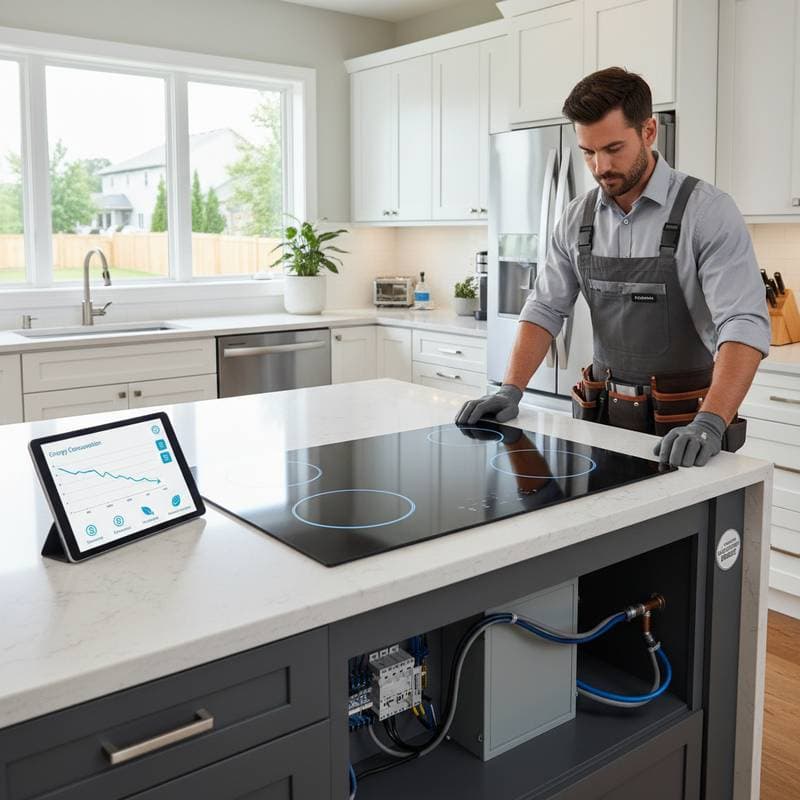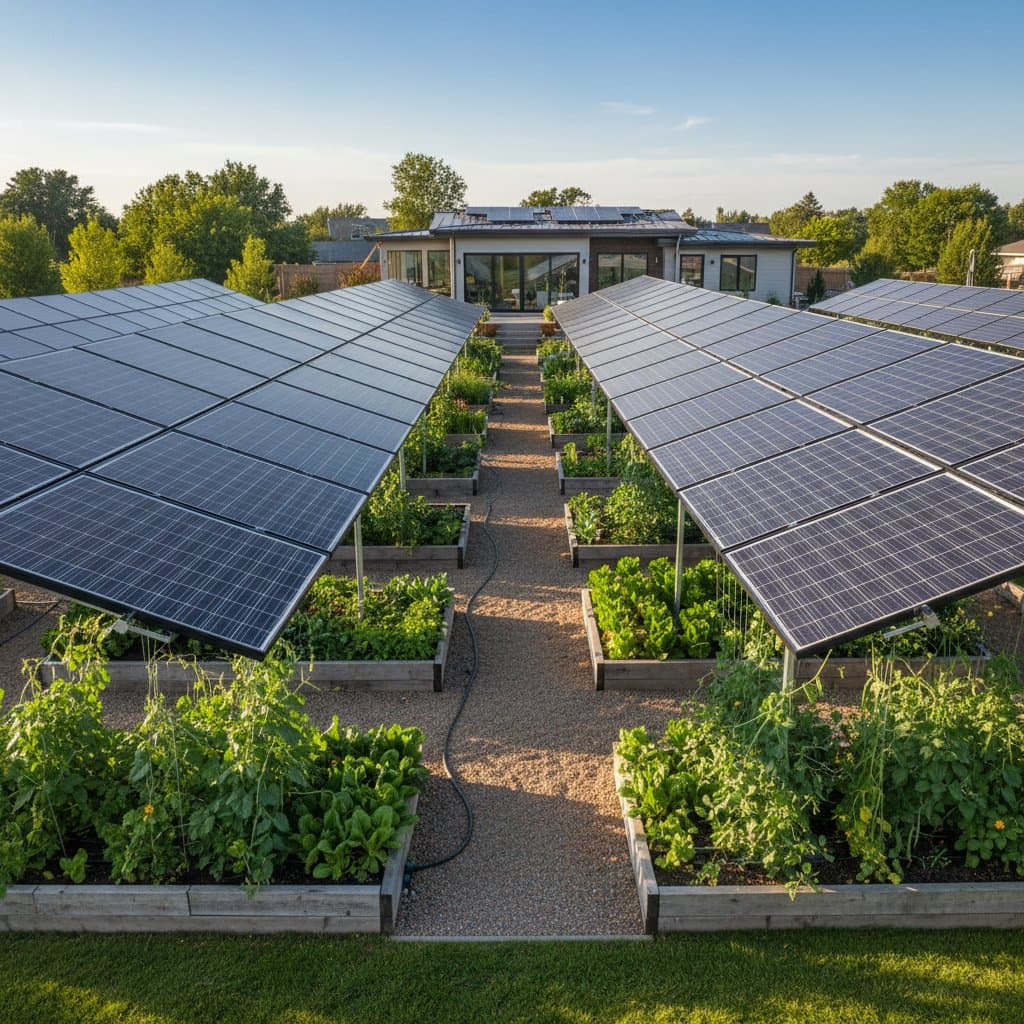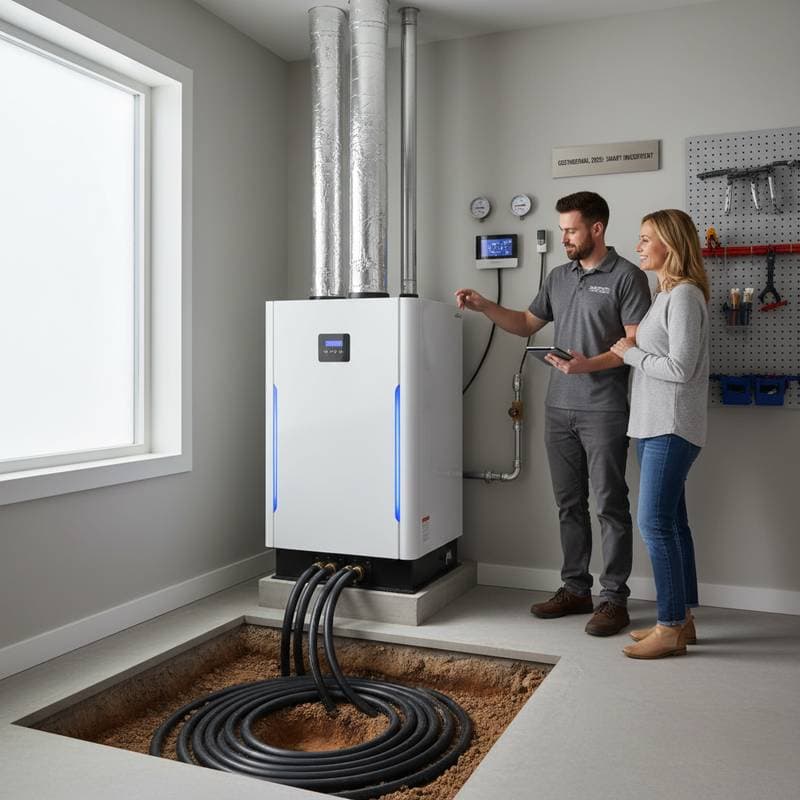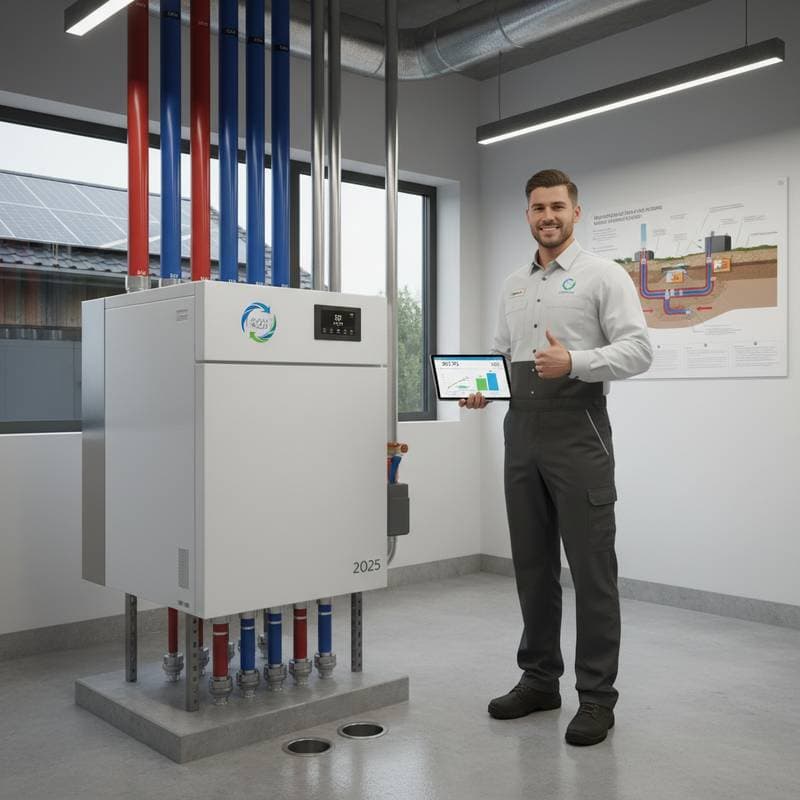Key Points
- Ground source heat pumps reduce heating bills by up to 60 percent and minimize environmental impact.
- Proper design, sizing, and installation ensure long-term efficiency and faster payback.
- Local climate, soil type, and land availability guide system selection and performance.
- Financial incentives and escalating energy costs enhance the appeal of ground source heating.
- Integrating geothermal systems with smart controls and efficient building envelopes optimizes savings.
The Universal Energy Dilemma
Homeowners encounter the same seasonal issue each year. As temperatures fall, the need for comfort increases, and utility bills rise accordingly. This creates a persistent balance between warmth, expense, and environmental concerns. Ground source heat pumps, also known as geothermal heat pumps, offer a solution by leveraging the earth stable underground temperature for efficient heating and cooling in diverse climates. These systems represent practical, scalable technology that reshapes home comfort and energy costs.
Why Ground Source Heating Matters Now
Energy prices vary, building regulations become stricter, and sustainability demands grow. Homeowners seek solutions that provide instant comfort alongside financial security. Ground source systems meet these needs by consuming 25 to 50 percent less electricity than standard heating or cooling units. When engineered correctly, they lower overall heating bills by approximately 60 percent relative to oil, gas, or electric resistance alternatives.
The environmental advantages prove equally concrete. These systems transfer heat from the ground to the home via a closed-loop pipe network buried underground, avoiding fuel combustion and generating few on-site emissions. This approach significantly decreases a household carbon footprint. Throughout the system lifetime, such efficiency yields substantial savings and supports broader clean energy objectives.
How Ground Source Heat Pumps Work
Ground source heat pumps transfer thermal energy between the earth and the building. Refrigerant flows through underground loops where soil holds a steady temperature throughout the year. In winter, the refrigerant extracts heat from the ground and moves it indoors. During summer, the system reverses to expel excess indoor heat into the ground.
Buried loops adopt various configurations:
- Horizontal loops involve shallow trenches several feet deep, best for sites with ample land.
- Vertical loops employ deeper boreholes, suitable for compact properties or rocky ground.
- Pond or lake loops utilize submerged pipes in nearby water sources that satisfy thermal needs.
All options deliver core functionality, yet selection hinges on site-specific factors like soil conductivity and space constraints.
Cost Structure and Return on Investment
Ground source heat pump installation demands a higher initial investment than traditional furnaces or boilers. Costs vary by home size, soil properties, and loop design, typically spanning moderate five-figure amounts for modest residences to larger sums for extensive setups. However, sustained savings frequently surpass this outlay.
Well-installed systems cut operating expenses by 40 to 60 percent compared to conventional methods. Payback timelines generally span seven to twelve years, followed by decades of continued benefits. Underground loops endure over fifty years, while indoor units last twenty to twenty-five years. In contrast to repeated replacements of fossil fuel systems, geothermal options yield superior lifetime value.
Incentives bolster viability. Numerous areas provide tax credits, rebates, or low-interest loans to ease upfront costs. Paired with reliable energy reductions, these measures shorten payback and elevate returns. For those desiring stable long-term energy outlays, geothermal delivers unmatched consistency.
Performance Metrics That Matter
The Coefficient of Performance (COP) quantifies efficiency in ground source heat pumps, indicating heat output per unit of electricity input. Superior systems attain COP values from 3.5 to 5, meaning each unit of power generates three and a half to five units of heat. Electric resistance heating achieves only a COP of 1, and top gas furnaces seldom surpass an equivalent of 0.95.
This edge persists in most regions, although harsh soil or flawed installation may diminish results. Success depends on expert design and precise sizing to the home heating and cooling requirements.
Design and Installation Insights from the Field
Geothermal installations differ by site. A setup thriving in sandy soil might falter in heavy clay absent thorough planning. Skilled installers begin with detailed site assessments, including thermal conductivity tests to gauge ground heat transfer rates.
Essential design elements include:
- Precise load calculations to align the system with actual home demands.
- Optimal loop depth and spacing for steady temperature exchange without straining the ground.
- Effective grouting and sealing to avoid contamination and preserve efficiency.
- Accurate refrigerant levels and flow for maximum heat movement.
Professional involvement proves essential given the required expertise. Collaborate with certified experts, such as those adhering to International Ground Source Heat Pump Association guidelines, to secure performance and warranties.
Adaptability Across Climates
A frequent myth suggests ground source systems suit only temperate areas. In reality, they excel in extreme conditions by sourcing energy from stable subsurface temperatures rather than variable air. Underground layers a few feet down maintain consistent warmth or coolness annually.
In frigid zones, this reliability supplies heat despite plunging air temperatures. In hot regions, the system cools effectively by dissipating heat to cooler soil. Such versatility enables one unit to handle both heating and cooling duties.
Building Envelope and System Synergy
No heat pump compensates fully for inadequate insulation or drafts. Maximum savings arise when geothermal pairs with a tight building envelope. Enhancing insulation, patching leaks, and adding energy-efficient windows can shrink heating needs by 30 percent or greater. This allows for a more compact, cost-effective unit while upholding comfort.
Advanced thermostats and zoning refine output further. These tools adjust temperatures by room and usage, eliminating waste. Merging such features with geothermal creates an integrated approach that amplifies savings and sustainability.
The Broader Environmental Value
Beyond individual benefits, ground source heating advances community goals by easing peak demand and curbing emissions. Heat transfer avoids combustion byproducts common in standard furnaces. Powered by renewables, these systems approach zero emissions; even on mixed grids, they outperform direct fuel use.
A single home installation offsets emissions equivalent to multiple cars over time. This collective impact fosters resilient, low-carbon neighborhoods.
Common Questions About Ground Source Systems
Can a geothermal system replace existing heating and cooling?
Yes, these units handle both functions and connect to current ducts or hydronic setups. Some retrofits need adjustments for seamless integration.
How much land is required for loops?
Requirements vary by design. Horizontal types demand more area, vertical less. A specialist assesses your site for the best fit.
What maintenance is needed?
Care remains simple: replace air filters, check pressures, and book yearly professional reviews. Loops require no upkeep post-installation.
How does it handle extreme cold?
Subsurface stability ensures consistent output below frost levels. Backup heat may apply in severe cases but activates infrequently.
Does it boost home value?
Absolutely; efficient homes draw premium buyers who appreciate low bills and tech. A verified system enhances marketability.
What if I sell before payback?
The upgrade boosts resale, with buyers often crediting future savings. In competitive markets, this recoups remaining costs.
Financial Planning for Sustainable Heating
Assess funding before proceeding. Options include home equity loans or green financing. Some integrate costs into renovations or refinances. Reduced energy payments frequently balance loan terms for immediate net gains.
Compare bids by lifecycle expenses, not initial price. Inferior units may incur higher long-run costs. Demand performance specs, warranties, and support details for informed choices.
Long-Term Benefits and Future Readiness
Geothermal systems extend beyond bill reductions. They shield against price hikes and regulatory shifts. Durable loops serve generations, allowing indoor updates without digging.
As grids green, these systems enhance sustainability. They align today needs with tomorrow energy landscape, ensuring enduring comfort and security.
Steps to Install Your Geothermal System
Start by consulting certified professionals for a site audit. Gather incentive details from local programs. Review financing to fit your budget. Proceed with installation, then monitor performance for optimal results. This process secures lasting efficiency and peace of mind.










